… I found nothing for World Snake Day, despite making more than a passing effort (which resulted in a lot of other photos, but they’ll be along in another post.) So we have the fallback images that I snagged a few days earlier, and a potentially-related bonus that was at least obtained yesterday.
The other day while refilling the hummingbird feeders, I found a decent snakeskin in the yard – notably, it was still quite pliable despite the heat of the day, and within an hour it had even started to dry out and stiffen up on my desk, so I’m surmising it was less than a couple hours old when I found it. It was roughly a meter in length, leading me to believe it was one of the water snakes, but then I found that it was not a complete skin, and what I took to be the head all rolled up, wasn’t.
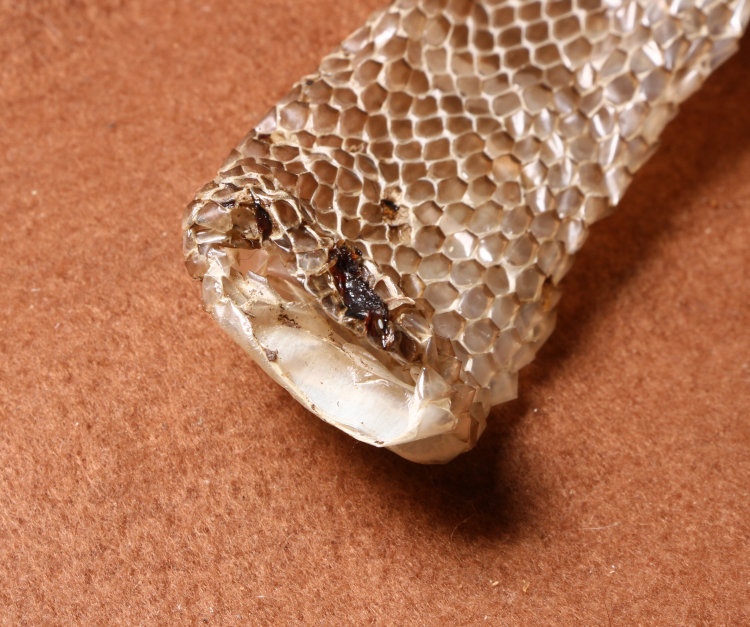
That meant that it could be several different species at this size, but there are further clues.
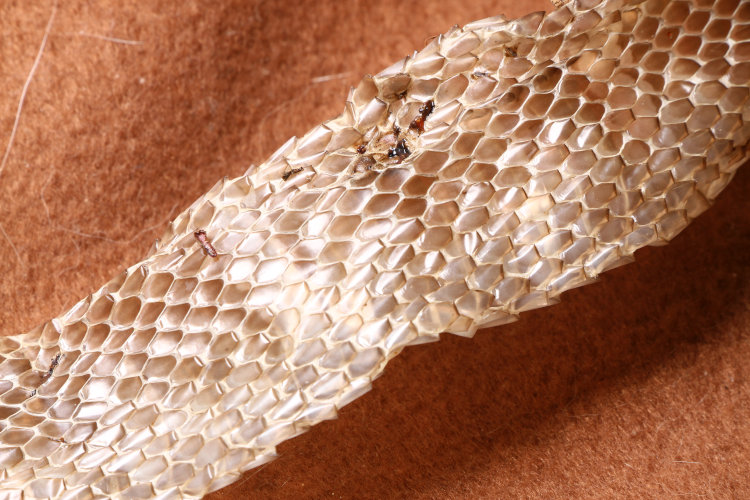
The scales were without ‘keels,’ the raised center ridge that some species have, so this ruled out eastern rat snakes and the water snakes. To show what I mean, we refer back to a red-bellied water snake (Nerodia erythrogaster) that I caught several weeks ago.
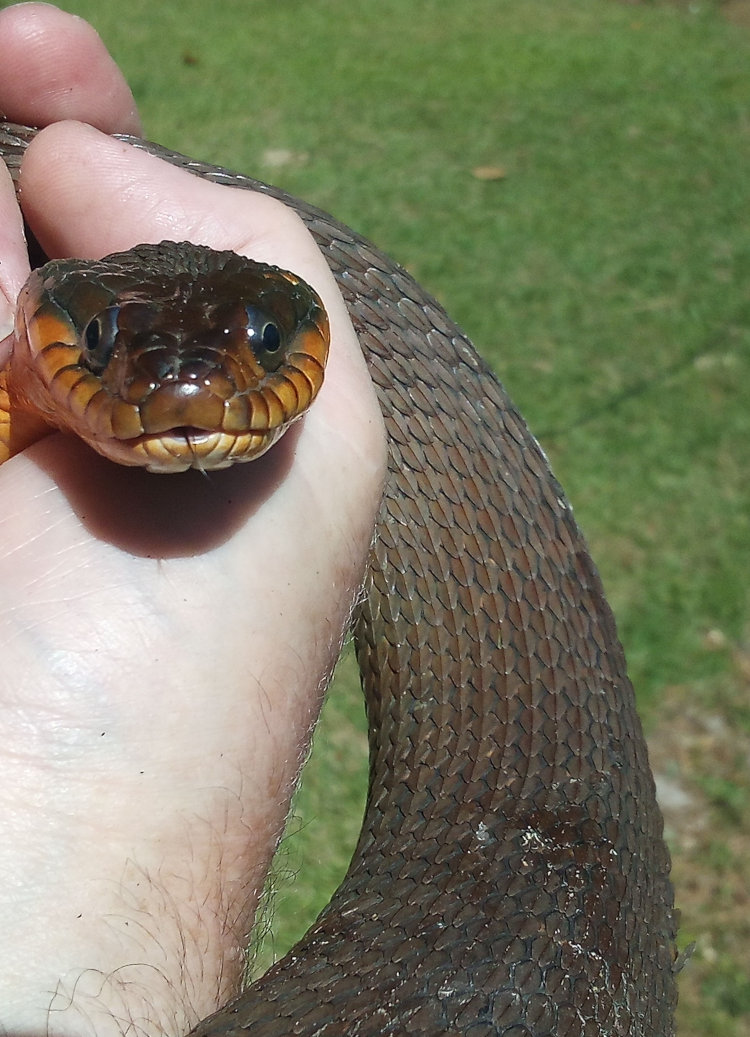
You can clearly see the ridges on the dorsal scales, which this shed skin did not possess. All water snakes in this area are the same, so definitely not the skin of a water snake. The same goes for the eastern rat snake, though the keels are far less pronounced in that species.
And we have a peek at the tail, for another telltale (I’m a riot):
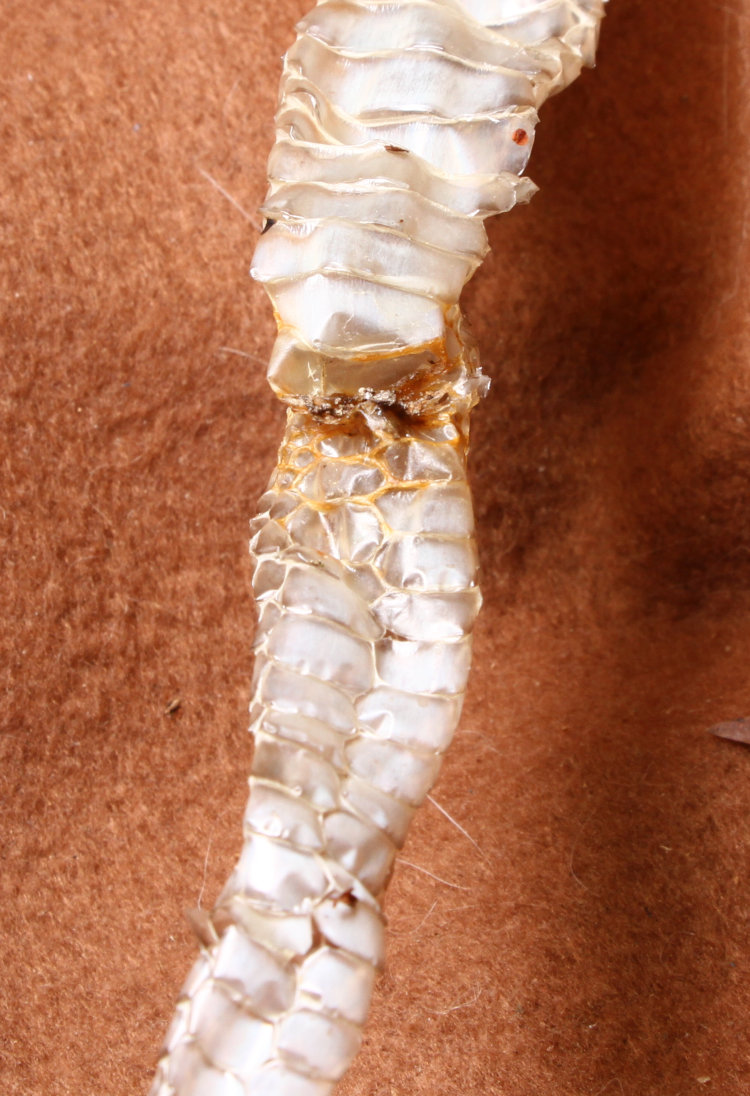
You can see the vent/cloaca just above center here, with the belly scales splitting into two offset scales behind (below, here) that point. This at least indicates that it’s a non-venomous species, because all venomous species in North America have single belly scales beyond the vent (and of course the rattlesnakes don’t have complete, pointed tails either, which this one had.)
So that makes this likely either one of the racer species, of which I did catch a fleeting glimpse one day near the pond, or the eastern kingsnake (Lampropeltis getula,) which you’ve already seen, and matches this girth quite well, and was last seen nosing along the building only a meter from where this was found. That’s some pretty hard evidence. Since there are indications on the skin of recent injuries, should I catch that specimen again I can compare it against the skin to confirm.
(By the way, since snakes shed their skins by peeling them away ‘inside-out,’ when you find one, the tail points in the direction the snake was traveling, in this case away from the house, which is where I began my search since the skin was fresh. No luck on that end either.)
That’s all I have that is definitively snake-related, and wasn’t even found on World Snake Day. But, we have something else that I’m not sure is related or not.
I mentioned earlier that we’d found a small leathery egg in the middle of the yard, and yesterday I found an empty eggshell – and then a semi-excavated nest with another visible within.
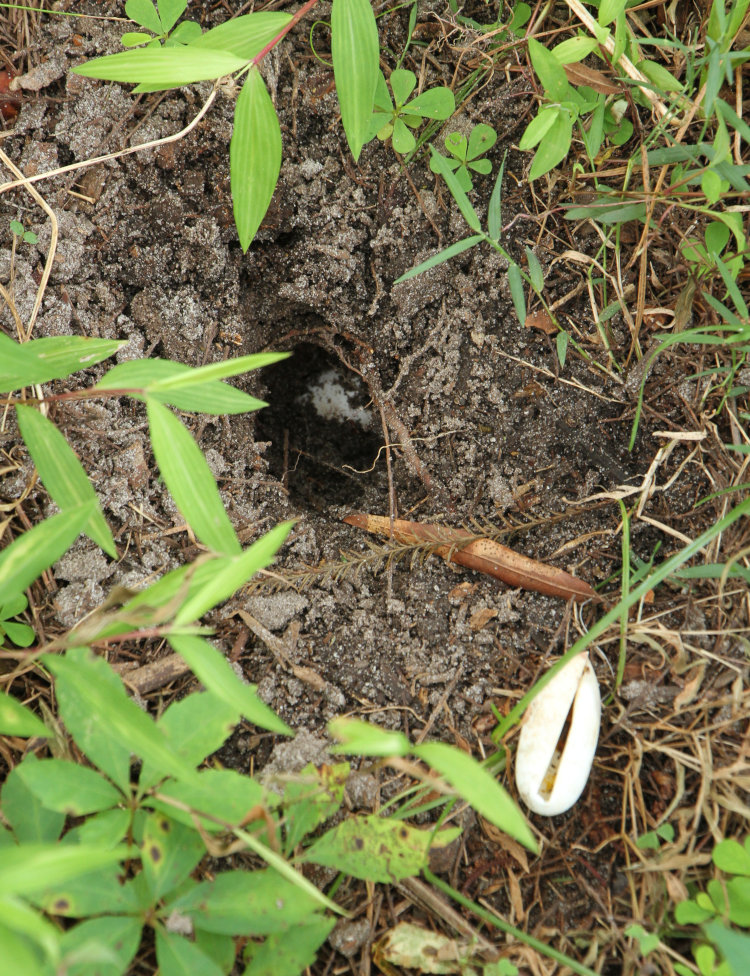
Lots of critters will dig up fresh nests for the eggs, among them squirrels, raccoons, and opossums, all of which are on the property. The empty eggshell still had damp yolk within it, leading me to believe that the nest was discovered because it was recent.
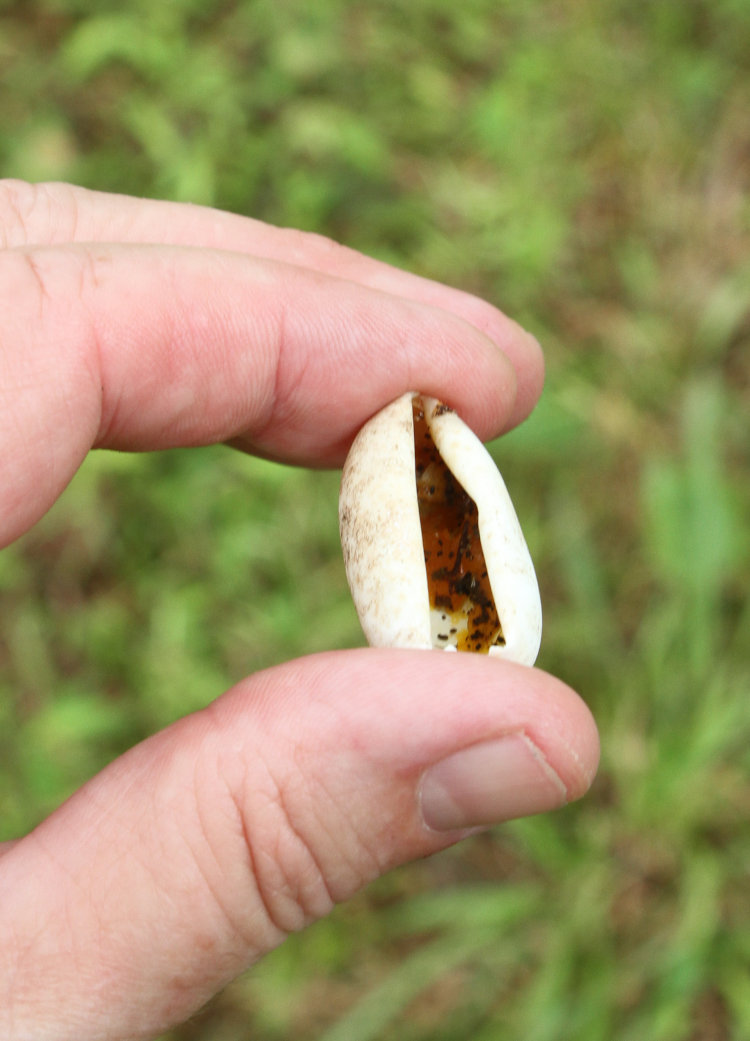
This was after another heavy downpour, which might have sparked a turtle to come out and lay eggs while the soil was softened. I resolved to dig up the nest and move the remaining eggs to a safe spot where I could also monitor them.
What I discovered doing this, however, was that the visible egg was nestled in a tiny hollow among a tangle of cypress roots, and excavating this while trying to avoid damaging other eggs was quite tricky. But given the undisturbed nature of the grass surrounding it, I was left assuming that this was the only one, or the only one left at least, since I don’t think anything could have dug deeper past this barrier. I placed the egg back into the hollow among the roots to show just what the conditions were like:
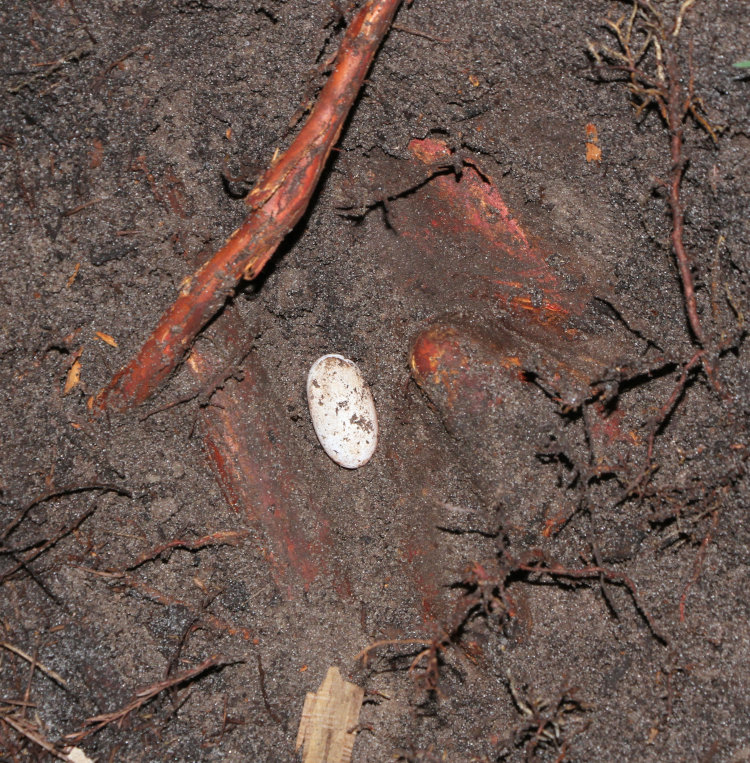
The pics does a faint disservice, since I just popped the on-camera flash for this and this eliminated the shadows that would show how deep it was among the roots. So I took the single remaining egg and compared it to the one found a couple days before, up until then ensconced in a small terrarium:
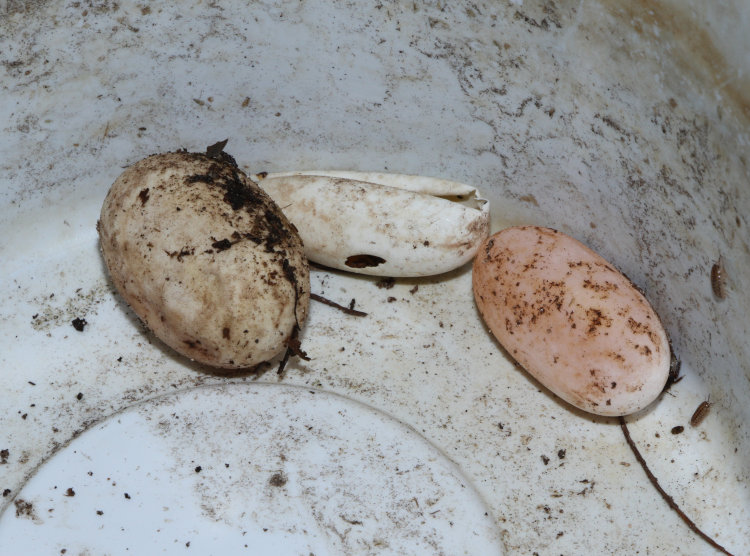
That’s the previously-found egg on the left, the recent empty eggshell in the middle, and the newly-unearthed egg on the right – you can see the orange yolk shadow that shows the egg is overturned here. But certainly a hmmmm moment, because they’re definitely not a match. Also, what little I’ve seen of turtle eggs is that they’re usually round, and these are distinctly oblong, the recent ones especially so. That says snake to me – yet the nest burrow doesn’t seem like something a snake would do, though I’m not the most reliable source of info in this regard (or indeed, any.)
Regardless, they’re both back in the little terrarium, actually my macro aquarium, tucked down in moist soil and housed outside to match the ambient temperatures as much as possible.

So we’ll see what transpires, eh? Though I may add something to this setup to enclose any hatchlings, should they emerge – I do learn from my past mistakes. A little.



















































